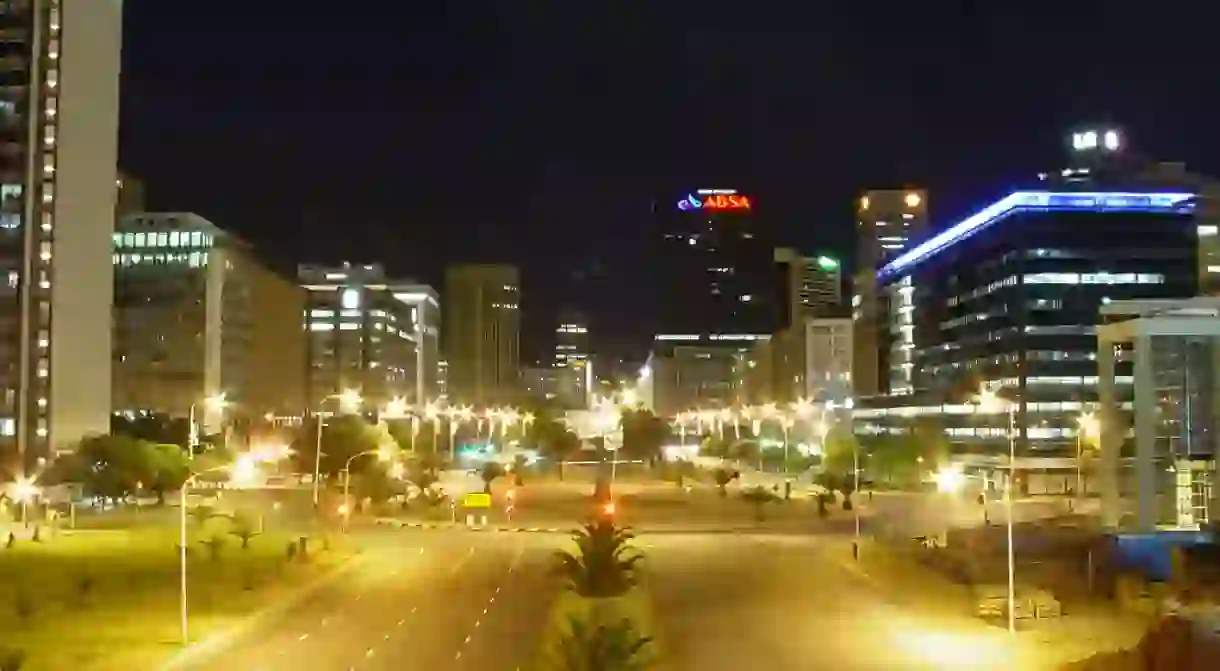Unexpected Things About Cape Town, South Africa

As the oldest city in South Africa, Cape Town has a rich natural and cultural history that locals and visitors alike love to explore. However there are many things about the city that are hidden from plain sight or have simply been forgotten, with some secrets occurring right under our feet. Read on to find out if you know everything there is to know about the Mother City.
Table Mountain was once the bottom of a valley
Table Mountain is one of Cape Town’s most visited sites, known for its table-top flatness and breathtaking views of the city. Around 260 million years old, the mountain owes its unique flatness to the fact that it is a syncline mountain, meaning that it was once the bottom of a valley. A contributing factor to the mountain’s flatness is that it consists entirely of the very hard, lower layer of the Table Mountain Sandstone Formation. Originally, this was covered by a thin glacial tillite layer, known as the Pakhuis Formation, and a third layer of sandstone. The softer layers eventually eroded away, leaving a hard, flat sandstone platform which today forms Table Mountain’s top.

Cape Town was originally known as the Cape of Storms
Before Cape Town was known as the Cape of Good Hope, it was named Cabo das Tormentas (Cape of Storms). The title was bestowed in 1488 by Portuguese explorer Bartolomeu Dias who named the area for its treacherous seas that sent many ships to their watery graves. Dias was the first European to round the Cape, marking his trip as a milestone in Portugal’s attempts to establish direct trade relations with the Far East. Today, 2,500 historical shipwrecks from England, Portugal, the Netherlands and Spain are found along the South African coastline.

Constantia wine was famous
The South African wine industry dates back to 1659 when the first Cape wine was produced in Constantia, near Cape Town. The wine produced by Groot Constantia — the oldest wine producing estate in South Africa — became one of the most famous wines in England and Europe in the 18th-19th centuries. The estate’s dessert wine, known as ‘Constantia wyn’, became a favorite of European kings and emperors, such as Frederick the Great and Napoleon, who had it ordered from his exile on St. Helena island. So renowned was Constantia wyn that it was even cited in famous literature such as Sense and Sensibility by Jane Austen, Charles Dickens’ The Mystery of Edwin Drood and in French poet Charles Baudelaire’s poem ‘Sed non satiata.’

70 Percent of the Cape’s fynbos is not found anywhere else
The Cape’s renowned fynbos (shrubland) forms part of the Cape Floral Kingdom, the smallest yet richest of the six floral kingdoms in the world. The fynbos comprise an amazing diversity of plant species, making South Africa the third most biodiverse country in the world. The Table Mountain National Park, for example, has more plant species in its 22,000 hectares than the entire British Isles or New Zealand.

Adderley Street was originally called Heerengracht
Adderley Street, Cape Town’s lively main road, is known for its string of department stores, historical buildings and flower sellers. However, over a century ago, Adderley Street was very different from what we know today. It was originally called Heerengracht after the gracht (canal) that ran down its center, originating from the rivers that flowed from Table Mountain. At the time, the street was residential and mainly used as a walkway beside the canal, but by the 1850s, it had become the commercial hub that it remains to be to this day. In 1850, Heerengracht was renamed Adderley Street in honor of British politician Charles B. Adderley who successfully fought against the British government to turn Cape Town into a penal colony.

Wild cats are still found on the mountains around Cape Town
Over 200,000 people climb Lion’s Head every year; however, many are unaware of the beautiful, stealthy creatures that roam the mountains and hills around Cape Town. In the 17th-18th centuries, hippos, elephants, lions, hyenas and leopards could be found roaming the plains. Sadly, the last lion on Lion’s Head was shot in 1802, and the last leopard sometime in the 1820s. Today the area is still home to some nocturnal cats, including the caracal, lynx and African wildcat. Sightings of these incredible cats are rare, but they are known to live on the slopes of Table Mountain, Lion’s Head and Signal Hill.

Cape Town is situated on an underground river called Camissa
When the Dutch established a refreshment station at the Cape during the 1600s, they relied on fresh water from the Camissa River to grow their crops. Camissa, meaning ‘place of sweet waters’, was the Khoi people’s name for Cape Town. The city once had four rivers, including the Camissa River, and 36 springs, all of which were channeled underground and drained out to the sea as the city expanded. Thanks to energy generated by the rivers, Cape Town received electricity before London in 1895. Today, 15 springs still run underneath the ground in the city bowl — of which five are channeled into the Molteno Dam in the suburb of Oranjezicht.

You can tour the city’s underground tunnels
Once known as Little Amsterdam, Cape Town was covered with a network of canals that supplied water to the city, but these were covered in the 1860s due to health concerns and the need to build roads. Gallons of wasted spring water still flow through the underground tunnels out into the Atlantic Sea every day. A citizen community program has been established to try and restore the city’s historic waterways . Today many tour companies offer historical tours of the tunnels, providing a completely new perspective of the city.













